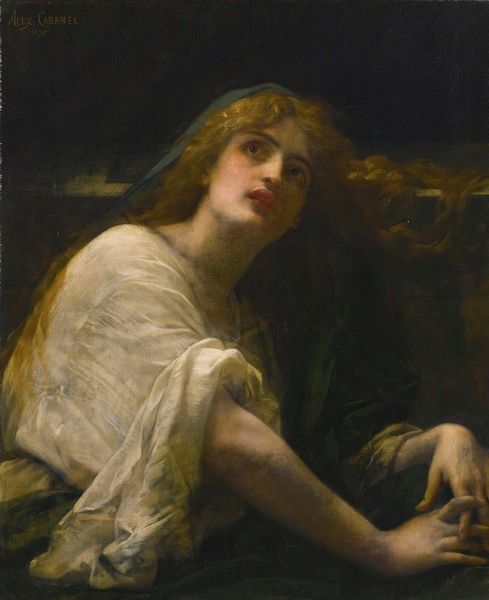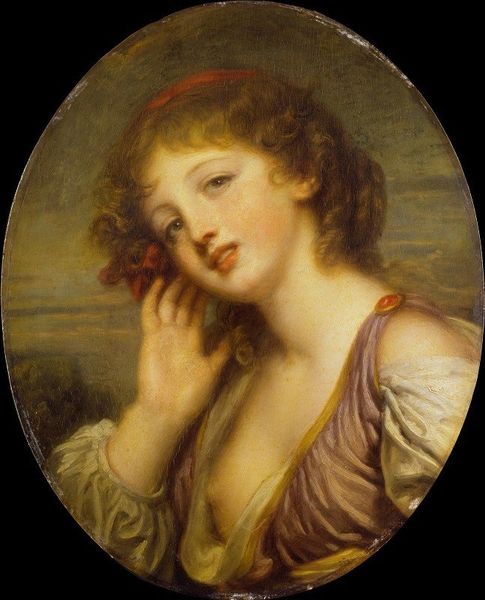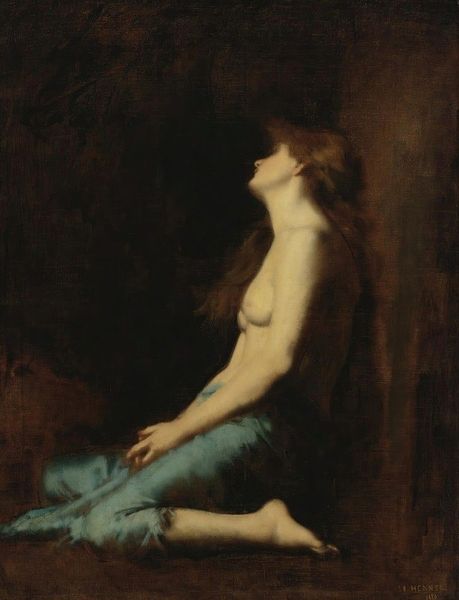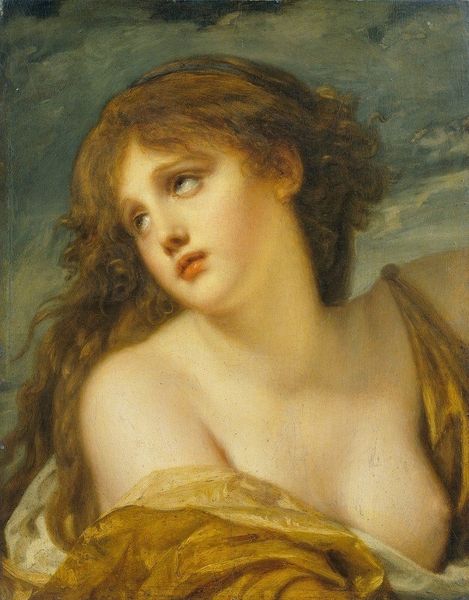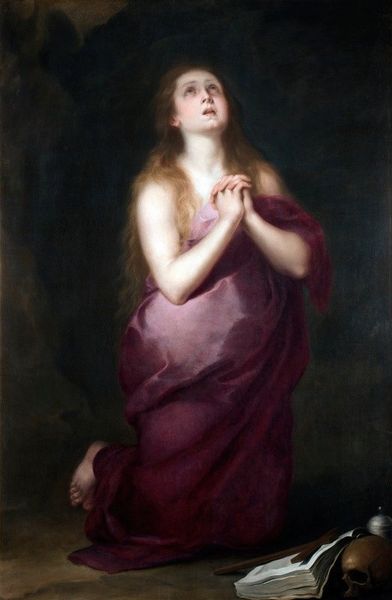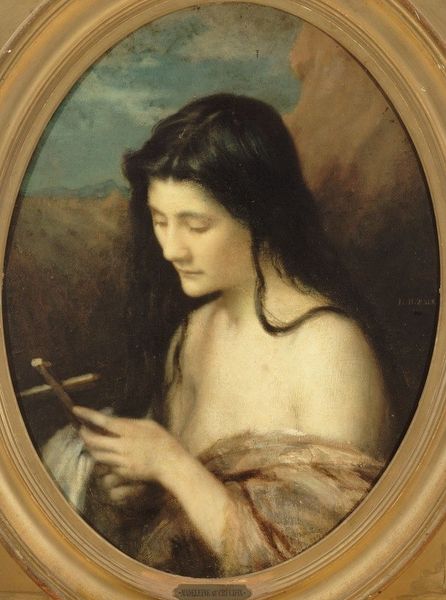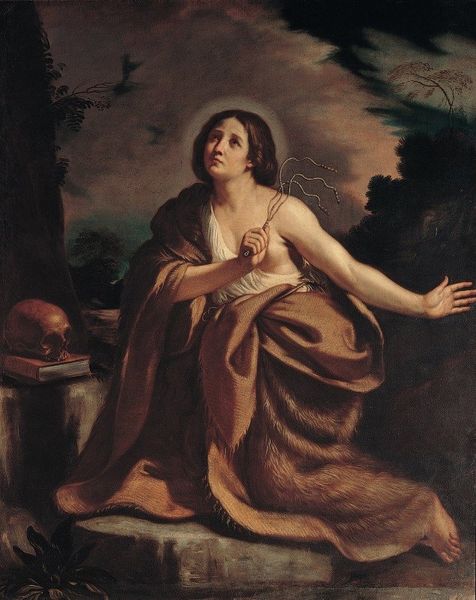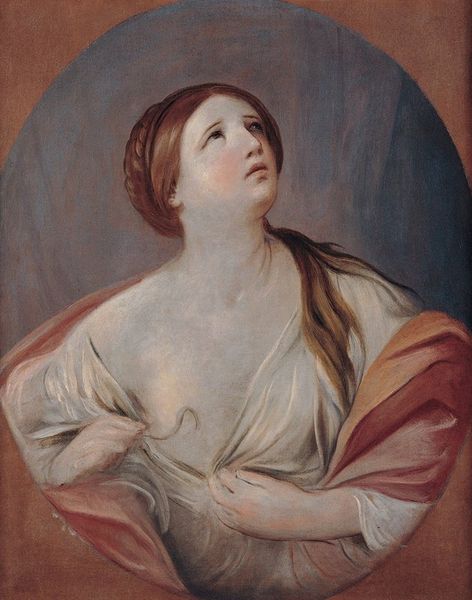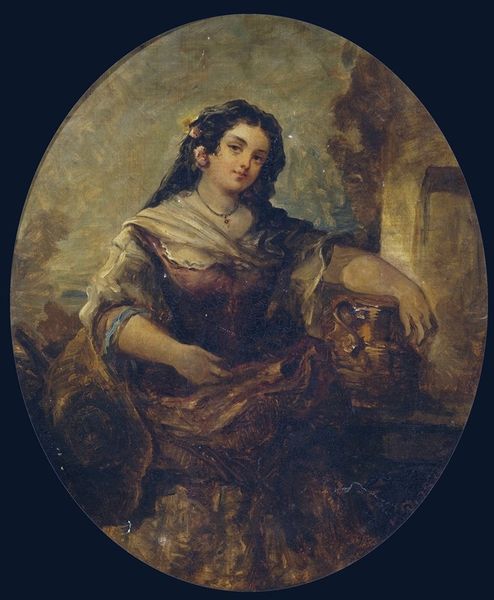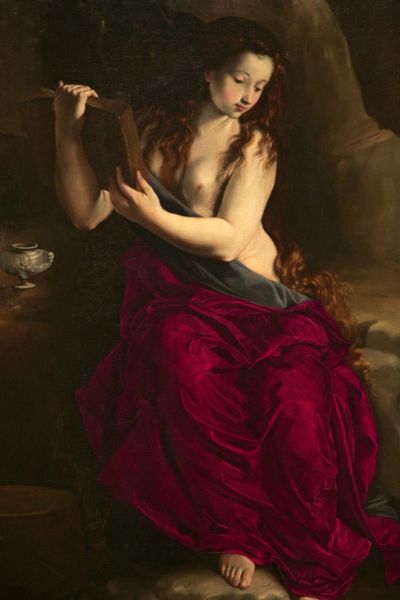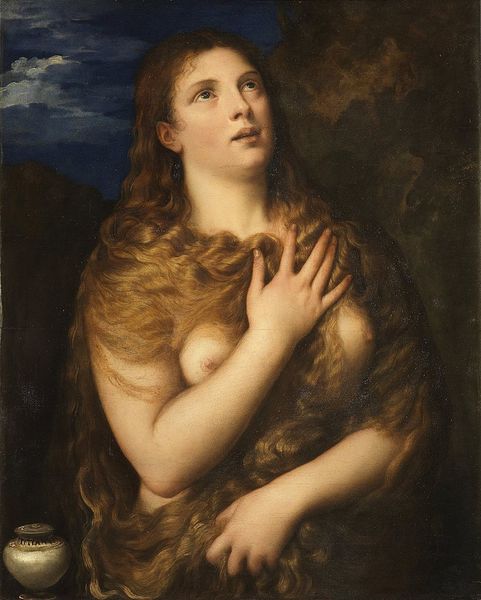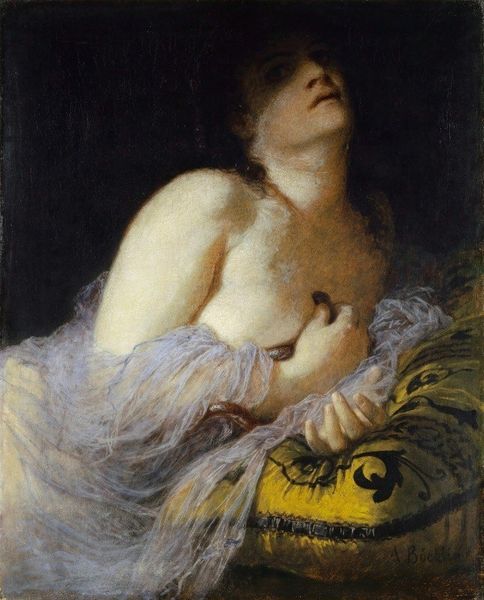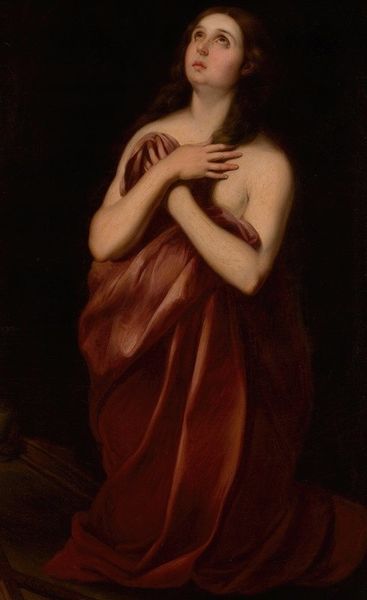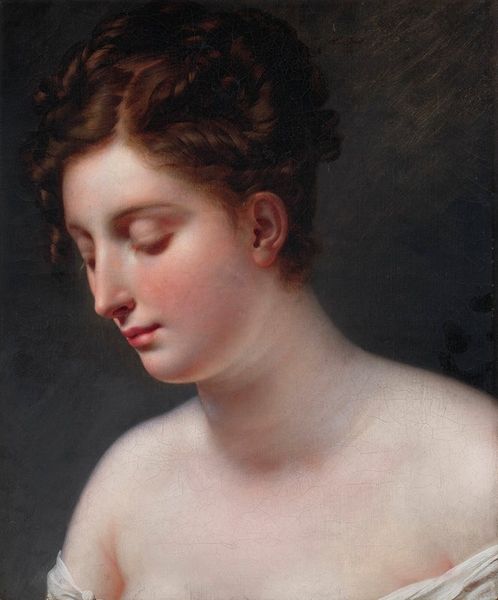
Dimensions: 99 x 78.5 cm
Copyright: Public domain
Editor: Domenico Induno’s “My Model,” created in 1856 using oil paint, is captivating. I’m immediately drawn to the draped fabric. What's interesting to you about it? Curator: The application of the paint is rather loose here, which is interesting given its date. Think about what it meant to produce, acquire, and wear a piece of fabric like this in 1856. To me, it is all about labor. We can analyze the conditions, skills, and networks required. What does it communicate about the model herself? Editor: The cloth seems casually placed, which makes me wonder if it's meant to denote her social status or her perceived lack thereof as simply "the model." Was the production of portraits like this one considered a skilled profession or something else at the time? Curator: Portraiture had complex class associations. The act of painting demanded skill. How do you think Induno wanted this "labor" to be viewed by the public? Do you consider the final piece as part of this overall process? Editor: He perhaps wants to legitimize himself as a 'craftsman' in parallel with the craft embedded into the artwork. As an object for contemplation. The way she is looking downward seems like a social commentary. But then what would that comment be, considering the nude body? Curator: Exactly. Induno presents a seemingly romantic vision. Yet the raw materials, the act of creation, and the social standing it implies force us to confront the material conditions of artistic production and consumption. This labor is the artwork itself! Editor: That’s really given me a new perspective to think about what defines 'art' and the labor of creativity. I’ll definitely be thinking more about the hands that create. Curator: Indeed, considering the labor and materiality enriches our viewing experience. Now go do that.
Comments
No comments
Be the first to comment and join the conversation on the ultimate creative platform.
